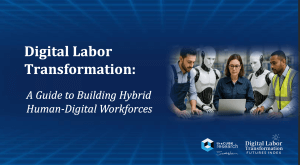
The artificial intelligence (AI) revolution won’t truly take hold till mainstream Web developers are building data-driven intelligence into even the most mundane browser-based applications.
With that in mind, I noticed several industry discussions and announcements recently that signal the coming of AI to everyday Web application development. Wikibon sees the following industry developments as harbingers of the next wave of augmented programming:
- Web developers using JavaScript to compose AI in the browser: The Web developer ecosystem depends intimately on front-end JavaScript programming frameworks such as React, Angular, and Vue, as well as back-end frameworks such as Node.js. Increasingly, there are JavaScript machine learning (ML), deep learning (DL), and natural language processing (NLP) libraries to use front-end Web apps. As discussed in this recent blog, available JavaScript libraries for ML, DL, and NLP include js, Synaptic, Neataptic, Conventjs, Webdnn, Deeplearnjs, Tensorflow Deep Playground, Compromise, Neuro.js, mljs, Mind, and Natural. Most support interactive visualization of ML/DL/NLP models in the browser. They generally include built-in neural-net such as multilayer perceptrons, multilayer long-short term memory networks, liquid state machines, and gated recurrent units, as well as prebuilt models for classification, regression, and image recognition. Some compress model data and accelerate execution through JavaScript APIs such as WebAssembly and WebGPU, and also leverage local GPUs through WebGL and other interfaces. They differ in their support for supervised, unsupervised, and reinforcement learning.
- Microservices developers decoupling AI microservices for orchestration on Kubernetes: Microservices are increasingly being distributed across edge environments for distributed orchestration. To this end, IBM has just introduced a new open-source framework for running distributed DL microservices over Kubernetes. The new Fabric for Deep Learning (FfDL), which is the foundation of IBM’s recently released Deep Learning as a Service (DLaaS) cloud offering, reduces the need for tight coupling between DL microservices that have been built in TensorFlow, PyTorch, Caffe2, and other libraries and frameworks. It does this by keeping each microservice as simple and stateless as possible, exposing RESTful APIs. FfDL uses REST APIs to access multiple DL libraries. It isolates DL component failures and allows each service to be independently developed, tested, deployed, scaled, and upgraded. It supports flexible management of DL hardware resources, training jobs, and monitoring and management across heterogeneous clusters of GPUs and CPUs on top of Kubernetes. All of this enables the framework to support scalable, resilient, and fault tolerant execution of distributed DL applications. And it allows DL microservices running on scattered compute nodes to learn from massive amounts of data.
- Developers accessing all AI cloud services through framework-agnostic API abstraction layer: None of the AI revolution will take off till Web developers can access this functionality through easy abstractions that are agnostic to the underlying models, algorithms, libraries, and frameworks. To that end, the Linux Foundation has just announced a very important initiative: the Acumos AI Project. Backed by AT&T, Tech Mahindra, and others, Acumos defines APIs, an open-source framework, and an AI model catalog to facilitate framework-agnostic access to AI apps. The framework does this by exposing AI frameworks such as TensorFlow with a common API. It will include a visual design editor and drag-and-drop application design and chaining lets trainers and other end users deploy normally complicated AI apps for training and testing in minutes. It supports such languages as Java, Python, and R. It will package and export production-ready AI applications as Docker files and incorporate code that Baidu is expected to contribute to leverage Kubernetes‘ elastic scheduling.
See this recent Wikibon research note for a larger discussion of trends in AI/ML/DL development practices, and this note for a discussion of trends in development abstractions and decoupling.
Here is theCUBE’s interview with IBM’s Dinesh Nirmal recently at Think 2018, in which he discusses the changing best practices in AI developement in the era of distributed microservices.


